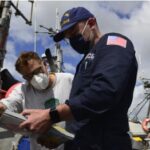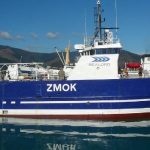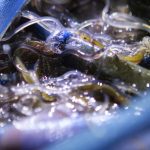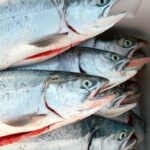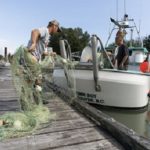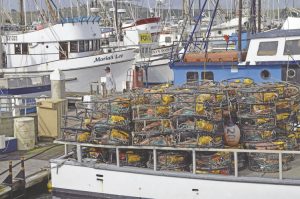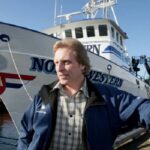Tag Archives: stock-assessment
Taking action on lobster stock fluctuation
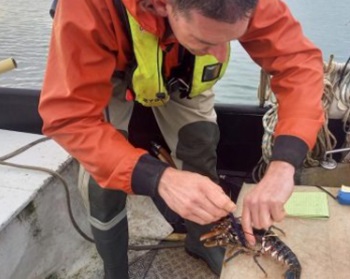 There’s increasing concern about unexplained structural decline of European lobster in the Netherlands’ Eastern Scheldt lobster fishery. Accurate stock assessment is essential for understanding these declines and implementing sustainable management, but scientific knowledge on lobster stocks in the Netherlands is lacking. Seeing a need for action, the Association of Professional Fishers Oosterschelde, Westschelde and Voordelta (OWV) developed a fishing plan to improve regional fisheries management, seeking to engage with the government and stakeholders to develop science-based fishery management strategies. more, >>CLICK TO READ<< 08:20
There’s increasing concern about unexplained structural decline of European lobster in the Netherlands’ Eastern Scheldt lobster fishery. Accurate stock assessment is essential for understanding these declines and implementing sustainable management, but scientific knowledge on lobster stocks in the Netherlands is lacking. Seeing a need for action, the Association of Professional Fishers Oosterschelde, Westschelde and Voordelta (OWV) developed a fishing plan to improve regional fisheries management, seeking to engage with the government and stakeholders to develop science-based fishery management strategies. more, >>CLICK TO READ<< 08:20

Good Indicators for Capelin Health, Despite DFO’s Doubling Down on Doom and Gloom
ST. JOHN’S, NL – Following DFO’s technical briefing on the 2J3KL capelin stock today, fish harvesters are optimistic that more favourable environmental conditions could lead to stock growth. “FFAW-Unifor is not surprised with the tone of today’s technical briefing by DFO Science, which have been consistently negative, irrespective of the data,” says FFAW-Unifor President Greg Pretty. “DFO Science is supposed to be an unbiased, transparent, and evidence-based in their approach. But most of them don’t spend more than a day on the water each year. They don’t see or appreciate the qualitative observations professional fish harvesters provide, and how we can support more robust and reliable data collection for capelin and other species. Instead of contributing to a productive relationship and more informed stock assessments, we have government scientists whose sole objective is to shut commercial fisheries down, regardless of facts,” says Dennis Chaulk, fish harvester from Bonavista Bay with over 28 years of experience on the water. >click to read< 19:17
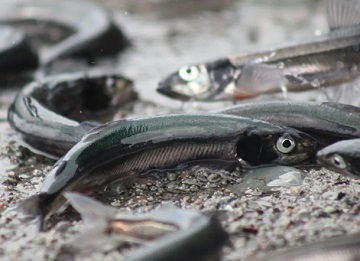
Positive signs in newest capelin stock assessment, but the tiny fish is still in the critical zone
“The capelin were in very good condition in the fall. That meant they’re longer and heavier than average. There’s lots of zooplankton, especially large zooplankton in the ecosystem,” said Hannah Murphy, a DFO research scientist and lead stock assessor. “We also had an increase in our larval abundance index this year, which is great. Larval survival is related to recruitment in capelin, so the more larvae we have and the more that survive, it’s better for the capelin stock.” Murphy said a full capelin acoustic survey happened over 2022, the first since 2019 due to the pandemic in 2020 and vessel availability in 2021. But the positivity ended there. This year, for the first time, the DFO has come up with a limit reference point for capelin. It’s set at 640 kilotons, the weight of fish in the water, and marks the boundary between the cautious and critical zones. >click to read< 17:32
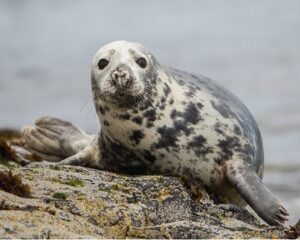
Why Canada shuttered some mackerel and spring herring fisheries in Québec and Atlantic Canada
The announcement by the Department of Fisheries and Oceans to suspend fishing for Atlantic mackerel and spring herring in the southern Gulf of St. Lawrence made waves as the fishing season opened. This decision will have repercussions on the fishing industry at several levels since these species are fished not only for commercial purposes, but are also used as bait in the lobster, snow crab and Atlantic halibut fisheries. The latest stock assessment of Atlantic mackerel and spring herring in the southern Gulf of St. Lawrence revealed high mortality rates among adult fish. In addition to high fishing pressure, the natural mortality of fish by predation also increased rapidly, The grey seal, now 16 times more abundant than in the 1960s, is the main predator of herring. >click to read< 18:38

2J3KL Cod Scientific Update was recently released. Important information was not included
The Department of Fisheries and Oceans released an update of the scientific assessment for 2J3KL Cod on Friday, April 17, 2020. While the Newfoundland and Labrador Groundfish Industry Development Council appreciates the effort by DFO-Science in completing this update in the face of the Covid-19 pandemic, it appears that some important information was not included in the scientific deliberations. There is an internationally-accepted scientific model that has been used for this stock since 2016. This model provides information on overall stock biomass, fishing mortality, natural mortality and recruitment. All the data required to complete this analysis was available to scientists, but they chose not to run the model for this update. Contact: Jim Baird >click to read< 12:06
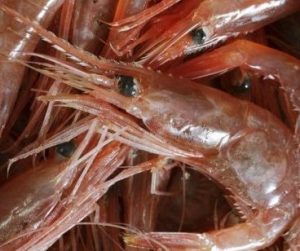
Cautious, healthy and critical. Northern shrimp stocks a mixed bag, suggest DFO’s latest numbers
Shrimp in fishing areas 4, 5, and 6 are assessed by the Department of Fisheries and Oceans every February. On Monday, the agency said despite some uptick, “We continue to be concerned about the future of these stocks.” For shrimp fishing Area 4, the stock remains in the cautious zone. For shrimp fishing Area 5, the stock is in the healthy zone. For shrimp fishing Area 6, the stock remains in the critical zone, according to DFO’s briefing. DFO said there are several factors that could account for Area 6 retaining critical status, including above-average bottom temperatures, and more predators. >click to read< 15:31
VIDEO: DFO northern shrimp stock assessment for N.L. far from rosy – >click to read<
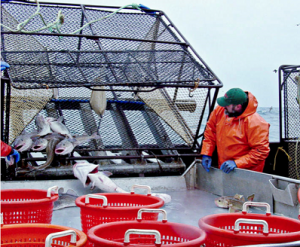
Extremely low cod numbers lead feds to close the Gulf of Alaska fishery for the first time
A stock assessment this fall put Gulf cod populations at a historic low, with “next to no” new eggs, according to National Oceanic and Atmospheric Administration research biologist Steve Barbeaux, who authored the report. At their current numbers, cod are below the federal threshold that protects them as a food source for endangered Steller sea lions. Once below that line, the total allowable catch goes to zero — in other words, the fishery shuts down. >click to read< 08:32
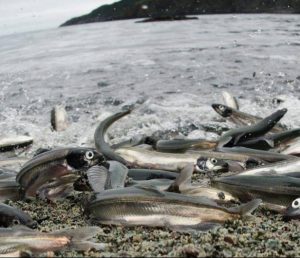
Caplin news not strong: DFO
The Department of Fisheries and Oceans (DFO) said Monday that despite a small increase in 2018, the spring acoustic abundance index remains at a relatively low level, similar to levels observed in the late 2000s. “A new forecast model predicts that the abundance index will increase slightly in 2019, but decrease in 2020,” a technical briefing document states.What this information means for the caplin fishery this upcoming season is no real change from last year. >click to read<17:43

Latest DFO assessment of NL snow crab presents a ‘mixed bag’ of stock health
The Department of Fisheries and Oceans (DFO) released its stock assessment for snow crab Tuesday, Feb. 26 and overall it was described as a “mixed bag.” According to information provided in a technical briefing, there are modest increases in overall exploitable biomass of snow crab but it is near its lowest observed level since the mid 1990’s. DFO crab scientist Dr. Krista Baker did point out there is a return to cooler waters, which is a positive sign going for the stocks. >click to read<18:14

New England shrimp population still looks bad amid shutdown
A new analysis of New England’s shrimp population doesn’t bode well for the future of the long-shuttered fishery for the crustaceans. The Maine-based shrimp fishery has been shut down since 2013 because of concerns such as warming ocean temperatures and poor survival of young. Scientists working with the Atlantic States Marine Fisheries Commission are assessing the shrimp stock, and so far it looks like little has changed. Results of the stock assessment “look fairly similar to what we’ve seen in previous years,” said Megan Ware, a fishery management plan coordinator with the Atlantic States. >click to read<08:54

Maine: Pending bait shortage poses another threat to New England lobster industry
Regulators want to cap this year’s herring landings at last year’s levels, or 50,000 metric tons, and slash next year’s quota of the most popular lobster bait from 110,000 to 30,000 metric tons. They want to do this to offset record low numbers of newborn herring that are entering the fishery to replace those that are caught, eaten by other predators or die from natural causes. The 2019 quota could fall even lower if regulators adopt a separate proposal to leave more herring in the sea to feed the fish, birds and marine mammals that eat them, including Gulf of Maine species such as cunner, cod, seals, whales, puffins and terns. The New England Fishery Management Council could decide the issue as early as September. Eco-based Management. >click to read<10:51
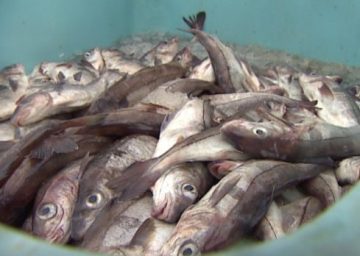
DFO stock assessment – Halibut and Haddock flourishing, cod struggling
Wild food fish populations off Atlantic Canada continue to confound scientists, with some species flourishing and others floundering. The latest examples are halibut and cod. The big flatfish is flourishing off Nova Scotia and Newfoundland, according to the latest stock assessment released by the Department of Fisheries and Oceans. However, another new DFO report shows cod stocks off southern Nova Scotia remain in dire shape.,,,Yellow flounder is another species that is struggling. >click to read< 14:56
NOAA Fisheries Seeks Comments on Proposed Scup Quotas
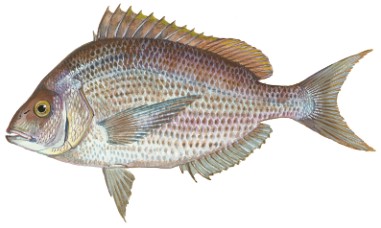 NOAA Fisheries proposes to revise the 2018 quotas and announce projected 2019 quotas for the scup fishery. Compared to the current specifications in place for 2018, this action would increase the commercial quotas and recreational harvest limits each by approximately 40 percent. The recent scup stock assessment update indicated that the stock is not overfished and overfishing did not occur in 2016. The update also showed that the 2015 year class was about 2.1 times larger than the average recruitment (i.e., number of age 0 scup) from 1984 to 2016. huh! click here to read the press release 17:28
NOAA Fisheries proposes to revise the 2018 quotas and announce projected 2019 quotas for the scup fishery. Compared to the current specifications in place for 2018, this action would increase the commercial quotas and recreational harvest limits each by approximately 40 percent. The recent scup stock assessment update indicated that the stock is not overfished and overfishing did not occur in 2016. The update also showed that the 2015 year class was about 2.1 times larger than the average recruitment (i.e., number of age 0 scup) from 1984 to 2016. huh! click here to read the press release 17:28
Stakeholders hope for more input, more preparedness for potential cod fishery
 When it comes to a rebuilding plan for the northern cod stocks, the Fish, Food and Allied Workers (FFAW) union wants the government to remember why it’s important to plan for the longevity for the groundfish off the province’s northeast coasts. “That fishery and the way it was, was the lifeblood of many, many communities around rural Newfoundland and Labrador,” FFAW secretary treasurer Dave Decker says. “It’s important that as we are rebuilding that stock … we keep focus on why we’re rebuilding fisheries and it’s to rejuvenate the same communities. Decker took comfort that towns and harvesters affected by a cod moratorium that will celebrate a 25-year anniversary this year weren’t forgotten in a standing committee on fisheries and oceans report tabled in the House of Commons Monday. Ken McDonald, Member of Parliament for Avalon, who initially motioned for the study last February, is hopeful that investments into DFO last year to create 135 new jobs for research scientists following years of cutbacks will help facilitate those assessments. continue reading the article here 22:15
When it comes to a rebuilding plan for the northern cod stocks, the Fish, Food and Allied Workers (FFAW) union wants the government to remember why it’s important to plan for the longevity for the groundfish off the province’s northeast coasts. “That fishery and the way it was, was the lifeblood of many, many communities around rural Newfoundland and Labrador,” FFAW secretary treasurer Dave Decker says. “It’s important that as we are rebuilding that stock … we keep focus on why we’re rebuilding fisheries and it’s to rejuvenate the same communities. Decker took comfort that towns and harvesters affected by a cod moratorium that will celebrate a 25-year anniversary this year weren’t forgotten in a standing committee on fisheries and oceans report tabled in the House of Commons Monday. Ken McDonald, Member of Parliament for Avalon, who initially motioned for the study last February, is hopeful that investments into DFO last year to create 135 new jobs for research scientists following years of cutbacks will help facilitate those assessments. continue reading the article here 22:15
Latest DFO stock assessment unveils a poor outlook for snow crab
 It’s not a pretty picture. In a technical briefing Monday, Darrell Mullowney, lead scientist for snow crab in the NL region for the Department of Fisheries and Oceans (DFO) said the latest stock assessment on snow crab in the Newfoundland and Labrador region shows an overall 40 per cent decline in exploitable biomass from 2015-16. Since 2013, the decline of exploitable biomass has been 80 per cent. Exploitable biomass refers to the crab that are adult, and of legal size — a shell size greater than 95 mm — for commercial fishing. The DFO numbers come from their own trawl surveys — one in fishing zones off the south coast each spring, and the other in northern fishing areas in the fall — as well as from reports from observers on commercial fishing vessels, the log books of the crab fishing fleets, and trap surveys conducted by DFO in inshore areas. The decline in crab stocks, explained Mullowney, is due to two major factors: warming water temperatures and groundfish. continue reading the story here 11:04
It’s not a pretty picture. In a technical briefing Monday, Darrell Mullowney, lead scientist for snow crab in the NL region for the Department of Fisheries and Oceans (DFO) said the latest stock assessment on snow crab in the Newfoundland and Labrador region shows an overall 40 per cent decline in exploitable biomass from 2015-16. Since 2013, the decline of exploitable biomass has been 80 per cent. Exploitable biomass refers to the crab that are adult, and of legal size — a shell size greater than 95 mm — for commercial fishing. The DFO numbers come from their own trawl surveys — one in fishing zones off the south coast each spring, and the other in northern fishing areas in the fall — as well as from reports from observers on commercial fishing vessels, the log books of the crab fishing fleets, and trap surveys conducted by DFO in inshore areas. The decline in crab stocks, explained Mullowney, is due to two major factors: warming water temperatures and groundfish. continue reading the story here 11:04
Queensland’s trawling industry under threat over low scallop numbers
 Scallop fishers have been told the Federal Government may step in and restrict fishing and exports for the entire trawling industry in Queensland if stock numbers do not dramatically improve. The warning came at a meeting at Bundaberg, which was the culmination of two days worth of talks between industry and the State Government about the dire state of the scallop stock. Fisheries Minister Bill Byrne announced last week he would close stock replenishment areas (SRAs) and introduce a winter spawning closure, in the wake of a stock assessment that put the biomass level at 6 per cent of 1977 levels. But emotional, frustrated and at times hostile fishermen and processors disputed the assessment. The industry has questioned how a fishery that had been managed for decades could end up in this position. Stephen Murphy, from Hervey Bay Cold Stores, said the fishing industry should not bear all the blame for the situation, saying climate and environmental issues also played a part. “Especially things like the Gladstone dredging. As soon as they started that dredging for the LNG project, they dumped millions and millions of tonnes of spoil from that harbour on to pretty well the best scallop grounds in Queensland,” he said. Read the article here 11:18
Scallop fishers have been told the Federal Government may step in and restrict fishing and exports for the entire trawling industry in Queensland if stock numbers do not dramatically improve. The warning came at a meeting at Bundaberg, which was the culmination of two days worth of talks between industry and the State Government about the dire state of the scallop stock. Fisheries Minister Bill Byrne announced last week he would close stock replenishment areas (SRAs) and introduce a winter spawning closure, in the wake of a stock assessment that put the biomass level at 6 per cent of 1977 levels. But emotional, frustrated and at times hostile fishermen and processors disputed the assessment. The industry has questioned how a fishery that had been managed for decades could end up in this position. Stephen Murphy, from Hervey Bay Cold Stores, said the fishing industry should not bear all the blame for the situation, saying climate and environmental issues also played a part. “Especially things like the Gladstone dredging. As soon as they started that dredging for the LNG project, they dumped millions and millions of tonnes of spoil from that harbour on to pretty well the best scallop grounds in Queensland,” he said. Read the article here 11:18
Species At Risk? Eel decline in Quebec and Ontario could end industry in Maritimes
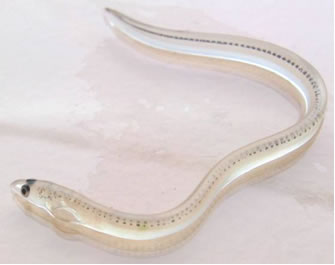 An effort to protect eels in Ontario and Quebec is threatening to shut down the little known but lucrative eel fishery in Nova Scotia and New Brunswick. “What is at stake is the livelihood of people in rural Nova Scotia,” said Yvonne Carey of Atlantic Elver Fishery, one of eight Nova Scotia eel fishery licence holders. Another licence is in New Brunswick. Between 130 and 140 people are employed each year netting adult and baby American eels as they enter and leave rivers in the two provinces. This week in Dartmouth, officials from the Department of Fisheries and Oceans will review data collected on those rivers as part of a to decide whether the Maritime eel population is really at risk. The department is considering a recommendation from wildlife experts to declare American eels a species at risk. Read the story here 14:41
An effort to protect eels in Ontario and Quebec is threatening to shut down the little known but lucrative eel fishery in Nova Scotia and New Brunswick. “What is at stake is the livelihood of people in rural Nova Scotia,” said Yvonne Carey of Atlantic Elver Fishery, one of eight Nova Scotia eel fishery licence holders. Another licence is in New Brunswick. Between 130 and 140 people are employed each year netting adult and baby American eels as they enter and leave rivers in the two provinces. This week in Dartmouth, officials from the Department of Fisheries and Oceans will review data collected on those rivers as part of a to decide whether the Maritime eel population is really at risk. The department is considering a recommendation from wildlife experts to declare American eels a species at risk. Read the story here 14:41
KAELIN: Fisheries commission should increase menhaden quota
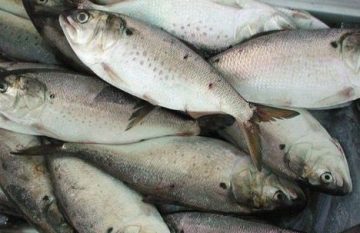 When Thanksgiving rolls around this year, the Atlantic States Marine Fisheries Commission may give New Jersey’s fishermen something to be thankful for. At its meeting Wednesday, the ASMFC will be voting on whether to increase the number of menhaden fishermen can catch each year. By voting in favor of a quota increase, which is strongly supported by the science New Jersey’s commission representatives can improve local economies and bolster the bottom line of hard-working fishermen during the summer and fall seasons while maintaining a balanced ocean ecosystem. After the release of a periodic stock assessment in 2012, the ASMFC incorrectly concluded the stock was threatened. The commission followed that assessment with a significant cut in the amount of menhaden New Jersey fishermen were allowed to catch — a cut of more than 50 percent that remains in effect today, much to the detriment of New Jersey fishing businesses. Read the story here 19:57
When Thanksgiving rolls around this year, the Atlantic States Marine Fisheries Commission may give New Jersey’s fishermen something to be thankful for. At its meeting Wednesday, the ASMFC will be voting on whether to increase the number of menhaden fishermen can catch each year. By voting in favor of a quota increase, which is strongly supported by the science New Jersey’s commission representatives can improve local economies and bolster the bottom line of hard-working fishermen during the summer and fall seasons while maintaining a balanced ocean ecosystem. After the release of a periodic stock assessment in 2012, the ASMFC incorrectly concluded the stock was threatened. The commission followed that assessment with a significant cut in the amount of menhaden New Jersey fishermen were allowed to catch — a cut of more than 50 percent that remains in effect today, much to the detriment of New Jersey fishing businesses. Read the story here 19:57
Latest report says menhaden thriving in the Gulf
 A commission that assesses the health and viability of the menhaden population in the Gulf released a report this week that says despite massive commercial hauls, the menhaden population is sound. It’s called a stock assessment for menhaden — a fish caught for catfood and fish oil supplements and a favorite food of large game fish. If fact, there’s been controversy this year over how many redfish commercial menhaden boats in the Gulf should be allowed to keep in the bycatch while fishing for menhaden. Gulf States Marine Fisheries Commission evaluated the status of the Gulf menhaden in U.S. waters and concluded the “Gulf of Mexico’s menhaden stock is not experiencing overfishing,” said Steven J. VanderKooy, a fisheries coordinator with the commission, which has an Ocean Springs office. Read the story here 19:42
A commission that assesses the health and viability of the menhaden population in the Gulf released a report this week that says despite massive commercial hauls, the menhaden population is sound. It’s called a stock assessment for menhaden — a fish caught for catfood and fish oil supplements and a favorite food of large game fish. If fact, there’s been controversy this year over how many redfish commercial menhaden boats in the Gulf should be allowed to keep in the bycatch while fishing for menhaden. Gulf States Marine Fisheries Commission evaluated the status of the Gulf menhaden in U.S. waters and concluded the “Gulf of Mexico’s menhaden stock is not experiencing overfishing,” said Steven J. VanderKooy, a fisheries coordinator with the commission, which has an Ocean Springs office. Read the story here 19:42
Pew Calls for 2 year moratorium on Commercial Fishing of Pacific Bluefin Tuna
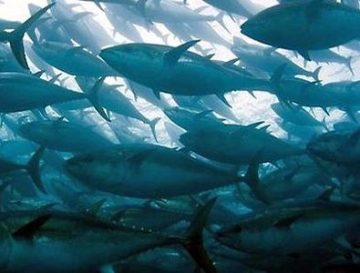 The Pew Charitable Trusts today called for a two-year moratorium on commercial fishing of the highly depleted Pacific bluefin tuna. In this year’s stock assessment, scientists found that the population is at just 2.6 percent of its historic size and that overall fishing mortality remains up to three times higher than is sustainable. Despite that dire state, the two international bodies that manage Pacific bluefin—the Inter-American Tropical Tuna Commission, which met this month in California, and the Western and Central Pacific Fisheries Commission, which meets in December in Fiji—have failed for several years to agree on a Pacific-wide recovery plan that will end overfishing and return the population to healthy levels. Projections from the International Scientific Committee for Tuna and Tuna-like Species in the North Pacific Ocean show that under current conditions, the catch limits now in place have a less than 1 percent chance of successfully rebuilding the population over the next 20 years. Read the rest here 16:27
The Pew Charitable Trusts today called for a two-year moratorium on commercial fishing of the highly depleted Pacific bluefin tuna. In this year’s stock assessment, scientists found that the population is at just 2.6 percent of its historic size and that overall fishing mortality remains up to three times higher than is sustainable. Despite that dire state, the two international bodies that manage Pacific bluefin—the Inter-American Tropical Tuna Commission, which met this month in California, and the Western and Central Pacific Fisheries Commission, which meets in December in Fiji—have failed for several years to agree on a Pacific-wide recovery plan that will end overfishing and return the population to healthy levels. Projections from the International Scientific Committee for Tuna and Tuna-like Species in the North Pacific Ocean show that under current conditions, the catch limits now in place have a less than 1 percent chance of successfully rebuilding the population over the next 20 years. Read the rest here 16:27
Department of Fisheries and Oceans: Northern cod biomass at highest rate since 1992
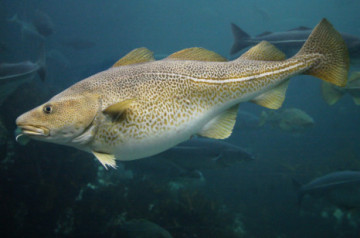 The Atlantic cod stocks are returning, but there’s still a long way to go before a large-scale commercial fishery becomes viable again. That’s the finding of new research by the Department of Fisheries and Oceans, which shows that cod stocks in the Northern region are on the way towards leaving the “critical” designation. The stock in the 2J, 3K and 3L regions has increased to an estimated 538,000 tons of fish — the highest rate since 1992. Still, the stock only reaches 34 per cent of the level needed to escape the “critical” zone. DFO performs stock assessments every three years, sourcing information from vessel surveys, commercial catches, tags on the cod and more. In 2013, the stock reached about 300,000 tons in biomass. Today, it’s almost double that. Read the story here 08:23
The Atlantic cod stocks are returning, but there’s still a long way to go before a large-scale commercial fishery becomes viable again. That’s the finding of new research by the Department of Fisheries and Oceans, which shows that cod stocks in the Northern region are on the way towards leaving the “critical” designation. The stock in the 2J, 3K and 3L regions has increased to an estimated 538,000 tons of fish — the highest rate since 1992. Still, the stock only reaches 34 per cent of the level needed to escape the “critical” zone. DFO performs stock assessments every three years, sourcing information from vessel surveys, commercial catches, tags on the cod and more. In 2013, the stock reached about 300,000 tons in biomass. Today, it’s almost double that. Read the story here 08:23
Flounder cuts may be phased in following another questionable NOAA NESC stock assessment.
 A widely attacked proposal to reduce summer flounder catches by 43 percent next year may be replaced by one that phases in the cutbacks over three years. Koeneke, who has suffered increasing restrictions over the years _ the minimum fish size going from 13 inches in 1985 to 18 inches today _ doesn’t accept the science. “I’m convinced they don’t know what they’re talking about. We see a lot of flounder. We raised the (size) limit and saved a lot of fish. It looks like it recovered and then the next year they say we have a problem,” said Koeneke. Read the rest here 08:29
A widely attacked proposal to reduce summer flounder catches by 43 percent next year may be replaced by one that phases in the cutbacks over three years. Koeneke, who has suffered increasing restrictions over the years _ the minimum fish size going from 13 inches in 1985 to 18 inches today _ doesn’t accept the science. “I’m convinced they don’t know what they’re talking about. We see a lot of flounder. We raised the (size) limit and saved a lot of fish. It looks like it recovered and then the next year they say we have a problem,” said Koeneke. Read the rest here 08:29
N.C. Div. Marine Fisheries stock-assessment for southern flounder kicked back in Peer Review process
 A stock-assessment report scheduled to go to the N.C. Marine Fisheries Commission in mid-February that judged southern flounder as still being overfished and overharvested has been rejected by a peer-review board of three scientists who noted problems with the report and would not approve it, according to Dr. Louis Daniel, NCDMF’s executive director. Had the stock-assessment report been approved, the agency’s 2005 Southern Flounder Fisheries Management Plan would have mandated drastic action to end overfishing and overharvest, up to and including closing the fishery. Read the rest here 18:40
A stock-assessment report scheduled to go to the N.C. Marine Fisheries Commission in mid-February that judged southern flounder as still being overfished and overharvested has been rejected by a peer-review board of three scientists who noted problems with the report and would not approve it, according to Dr. Louis Daniel, NCDMF’s executive director. Had the stock-assessment report been approved, the agency’s 2005 Southern Flounder Fisheries Management Plan would have mandated drastic action to end overfishing and overharvest, up to and including closing the fishery. Read the rest here 18:40
Markey, Warren seek answers from NOAA on stock assessment and interim cod measures
 Massachusetts’ two U.S. senators didn’t waste much time in the New Year before demanding answers from NOAA on the unscheduled stock assessment last summer that led to the effective shuttering of cod fishing in the Gulf of Maine and other fishery management issues.,, “It is our understanding that the stock assessment update was unscheduled and was conducted outside of the established procedure for conducting such updates,” Read the rest here 09:05
Massachusetts’ two U.S. senators didn’t waste much time in the New Year before demanding answers from NOAA on the unscheduled stock assessment last summer that led to the effective shuttering of cod fishing in the Gulf of Maine and other fishery management issues.,, “It is our understanding that the stock assessment update was unscheduled and was conducted outside of the established procedure for conducting such updates,” Read the rest here 09:05
Fairness and equality
 How many threatened loggerhead, green and marine sea turtles and the endangered Kemps Ridley turtle are off the coast of the United States? How many are off the North Carolina coast? These questions need answers. Because for years and years only commercial fishermen — those who provide restaurants and markets with seafood — have been required to report any interaction they have with sea turtles. Read more here 17:48
How many threatened loggerhead, green and marine sea turtles and the endangered Kemps Ridley turtle are off the coast of the United States? How many are off the North Carolina coast? These questions need answers. Because for years and years only commercial fishermen — those who provide restaurants and markets with seafood — have been required to report any interaction they have with sea turtles. Read more here 17:48
Stock Assessment Prioritization: Guiding decisions on which fish stocks to assess
 What are stock assessments? Assessments for managed fish and shellfish stocks are an important core activity of NOAA NMFS. Why is prioritization needed? There are 478 managed stocks in 46 Fishery Management Plans (Annual Report on Status of U.S. Fisheries). Presently, NOAA NMFS has the capacity to update only about 100 assessments each year. How will prioritization work? What are the next steps? Read [email protected] 13:02
What are stock assessments? Assessments for managed fish and shellfish stocks are an important core activity of NOAA NMFS. Why is prioritization needed? There are 478 managed stocks in 46 Fishery Management Plans (Annual Report on Status of U.S. Fisheries). Presently, NOAA NMFS has the capacity to update only about 100 assessments each year. How will prioritization work? What are the next steps? Read [email protected] 13:02
‘Real-time’ fish counts from in Gulf of Mexico a Senate priority, and it should be in every US Fishery Management Region
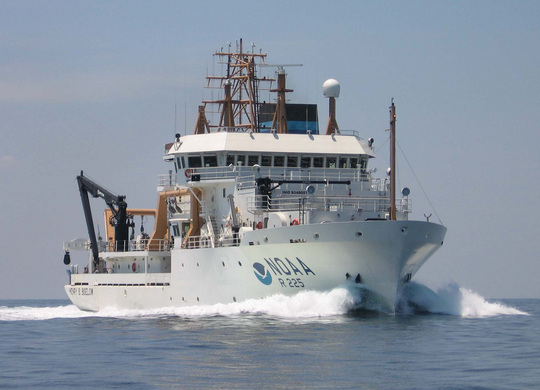 WASHINGTON – Senators want federal regulators to start using “real-time” fish counts in assessing the health of red snapper and other species in the Gulf of Mexico, a move they say would ease catch limits. continued@newspress
WASHINGTON – Senators want federal regulators to start using “real-time” fish counts in assessing the health of red snapper and other species in the Gulf of Mexico, a move they say would ease catch limits. continued@newspress
Auctions confirm renewed ‘uptick’ in cod – following its age-old pattern
![]() Both of Gloucester’s general fish auction houses are confirming reports by fishermen that cod — the fish that helped make this city the world’s oldest, most famous and, for a long time, its busiest fishing port — appears to be following its age-old pattern as it swims in increasing numbers into the shallow waters off Cape Ann. continue reading
Both of Gloucester’s general fish auction houses are confirming reports by fishermen that cod — the fish that helped make this city the world’s oldest, most famous and, for a long time, its busiest fishing port — appears to be following its age-old pattern as it swims in increasing numbers into the shallow waters off Cape Ann. continue reading


































